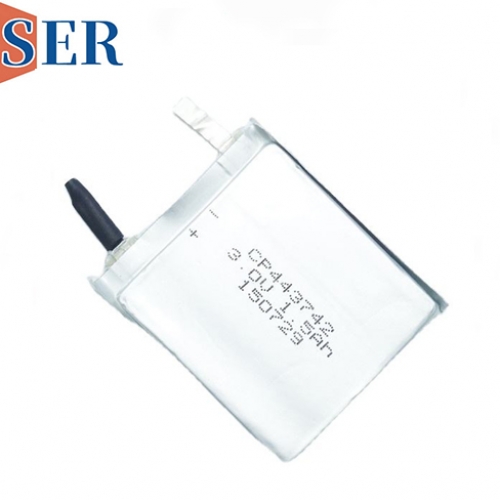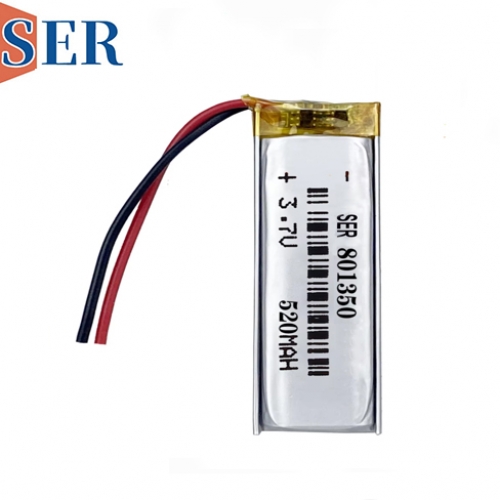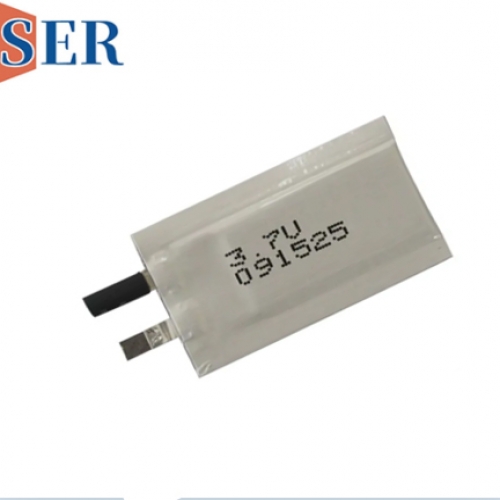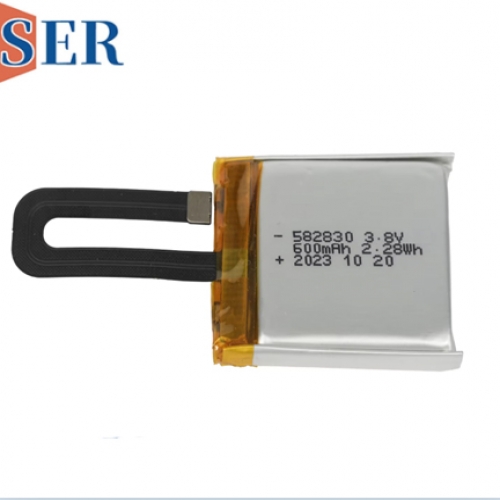LiMnO₂ Thin Primary Batteries in Fingerprint Lock Technology
LiMnO₂ Thin Primary Batteries in Fingerprint Lock Technology
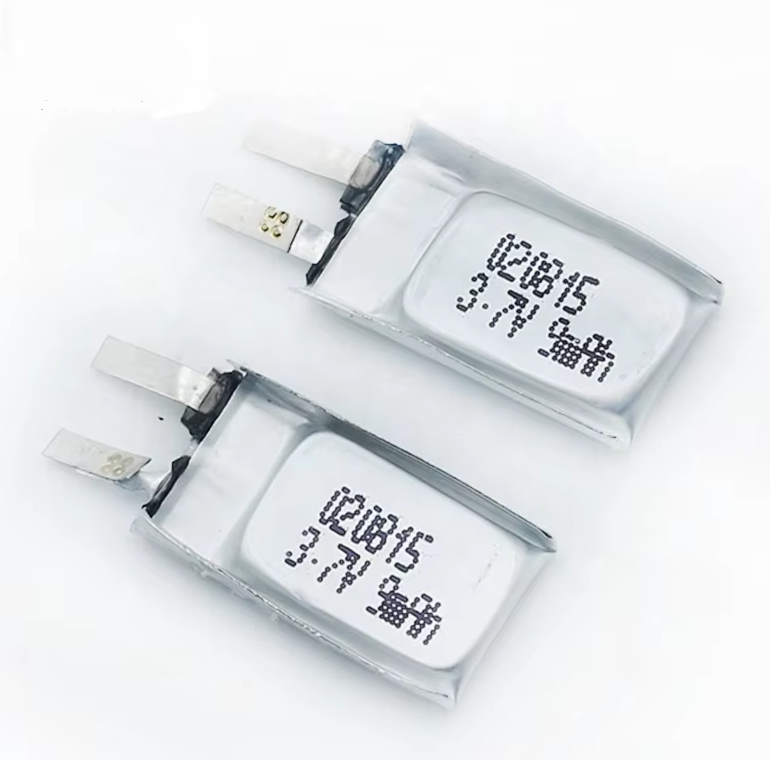
Abstract
In the era of rapid technological advancement, the integration of innovative battery technologies with smart security devices has become increasingly vital. This article delves into the utilization of LiMnO₂ thin primary batteries, specifically focusing on models such as the CP403742 Soft Pack Flat Battery and the CP224248 Ultra-Thin 3V 1200mAh LiMnO₂ Pouch Cell, in fingerprint lock systems. We will explore the unique characteristics of these batteries, their advantages in powering fingerprint locks, the challenges faced, and the future prospects of this synergy between battery technology and smart security.
1. Introduction
Fingerprint locks have revolutionized the security industry by offering a convenient, secure, and keyless access solution. These locks rely on a stable and reliable power source to function effectively. LiMnO₂ thin primary batteries have emerged as a promising option due to their specific attributes that align well with the requirements of fingerprint lock systems.
2. Overview of LiMnO₂ Thin Primary Batteries
2.1 Chemistry and Structure
LiMnO₂, or Lithium Manganese Dioxide, is a cathode material used in primary lithium batteries. The thin primary batteries, such as the CP403742 and CP224248, are designed with a soft pack or pouch cell structure. This structure allows for a high energy density in a compact form factor. The soft pack or pouch cell construction involves encapsulating the battery components in a flexible, laminated material, which provides several advantages over traditional cylindrical or prismatic battery designs.
2.2 Voltage and Capacity
The CP403742 and CP224248 models operate at a nominal voltage of 3V. This voltage level is suitable for powering the electronic components in fingerprint locks, including the fingerprint sensor, microcontroller, and other circuitry. The CP224248 model boasts a capacity of 1200mAh, which is relatively high for a thin primary battery. This high capacity ensures that the fingerprint lock can operate for an extended period without the need for frequent battery replacements.
2.3 Form Factor
The ultra-thin design of these batteries is a significant advantage. In fingerprint lock applications, space is often at a premium. The thin profile of the CP403742 and CP224248 batteries allows them to be easily integrated into the limited internal space of fingerprint locks without compromising the overall design or functionality of the lock.
3. Applications in Fingerprint Lock Systems
3.1 Powering the Fingerprint Sensor
The fingerprint sensor is the core component of a fingerprint lock. It requires a stable power supply to accurately capture and analyze fingerprint images. LiMnO₂ thin primary batteries provide the necessary power to ensure that the sensor operates reliably. The 3V output of these batteries is compatible with the voltage requirements of most fingerprint sensors, and the high capacity ensures that the sensor can function continuously for an extended period.
3.2 Supporting the Microcontroller
The microcontroller in a fingerprint lock is responsible for processing the fingerprint data, controlling the lock mechanism, and managing the user interface. It requires a consistent power source to perform these tasks efficiently. The LiMnO₂ batteries can deliver a steady voltage throughout their discharge cycle, which is crucial for the proper functioning of the microcontroller. This stability helps to prevent data corruption, system crashes, and other issues that could compromise the security and reliability of the fingerprint lock.
3.3 Enabling Wireless Communication (if applicable)
Some modern fingerprint locks are equipped with wireless communication capabilities, such as Bluetooth or Wi-Fi, to allow for remote management and monitoring. These wireless modules also require power to operate. The high capacity of the CP224248 battery, for example, can support the additional power demands of wireless communication without significantly reducing the overall battery life of the fingerprint lock.
3.4 Backup Power in Case of Main Power Failure
In situations where the fingerprint lock is connected to a main power source but experiences a power outage, the LiMnO₂ thin primary batteries can serve as a backup power supply. This ensures that the lock remains operational and continues to provide security during the power outage. The long shelf life of primary batteries also means that they can be stored in the lock for an extended period without significant self-discharge, ready to provide power when needed.
4. Advantages of Using LiMnO₂ ultra Thin Primary Batteries in Fingerprint Locks
4.1 High Energy Density
The high energy density of LiMnO₂ thin primary batteries allows them to store a large amount of energy in a small and lightweight package. This is particularly important for fingerprint locks, as it enables the locks to be designed with a sleek and compact form factor while still providing sufficient power for reliable operation.
4.2 Long Shelf Life
Primary batteries have a long shelf life compared to rechargeable batteries. This means that they can be manufactured, stored, and then installed in fingerprint locks without significant loss of capacity. For manufacturers and distributors, this reduces the need for frequent inventory turnover and ensures that the batteries are ready to provide power when the fingerprint lock is installed and used.
4.3 Low Self-Discharge Rate
LiMnO₂ thin primary batteries have a relatively low self-discharge rate. This means that they can retain their charge for an extended period when not in use. In fingerprint lock applications, where the batteries may be installed in the lock for months or even years before being used, a low self-discharge rate is essential to ensure that the batteries still have sufficient power when the lock is activated.
4.4 Safety and Reliability
Primary lithium batteries, including those using LiMnO₂ chemistry, are known for their safety and reliability. They are designed with multiple safety features, such as overcharge protection, over-discharge protection, and short-circuit protection, to prevent accidents and ensure stable operation. In fingerprint locks, which are used to secure valuable assets and provide access to sensitive areas, safety and reliability are of utmost importance.
4.5 Cost-Effectiveness
Although the initial cost of LiMnO₂ thin primary batteries may be slightly higher than some other battery types, their long life and low maintenance requirements make them cost-effective in the long run. The reduced need for frequent battery replacements and the associated labor costs can result in significant savings over the lifetime of the fingerprint lock.
5. Challenges and Considerations
5.1 Non-Rechargeability
One of the main limitations of primary batteries is their non-rechargeability. Once the battery is discharged, it must be replaced. In fingerprint lock applications, this means that users need to have access to replacement batteries and be willing to perform the replacement when necessary. However, with the long battery life of LiMnO₂ thin primary batteries, this is not a frequent occurrence.
5.2 Environmental Impact
The disposal of primary batteries can have an environmental impact if not handled properly. Lithium batteries contain materials that can be harmful to the environment if they are not recycled. Manufacturers and users of fingerprint locks need to be aware of proper battery disposal methods and encourage recycling to minimize the environmental footprint of these batteries.
5.3 Temperature Sensitivity
LiMnO₂ thin primary batteries can be sensitive to extreme temperatures. High temperatures can accelerate the self-discharge rate and reduce the overall capacity of the battery, while low temperatures can decrease the battery's performance. Fingerprint locks installed in outdoor or extreme temperature environments may need to be designed with additional insulation or temperature regulation features to protect the batteries.
5.4 Battery Management
Although primary batteries do not require the same level of battery management as rechargeable batteries, it is still important to monitor the battery voltage and ensure that it does not drop below a critical level. Some fingerprint locks may include battery level indicators to alert users when the battery needs to be replaced. However, in cases where the lock does not have this feature, users need to be aware of the expected battery life and replace the batteries in a timely manner.
6. Future Prospects
6.1 Advancements in Battery Technology
As battery technology continues to evolve, we can expect to see further improvements in the performance of LiMnO₂ thin primary batteries. Researchers are working on developing new cathode materials, electrolytes, and manufacturing processes to increase the energy density, reduce the self-discharge rate, and improve the safety of these batteries. These advancements could lead to even longer battery life and better performance in fingerprint lock applications.
6.2 Integration with Smart Home Systems
The trend towards smart home integration is expected to continue, and fingerprint locks will play an increasingly important role in these systems. LiMnO₂ thin primary batteries will need to be able to support the additional power demands of smart home connectivity features, such as voice control, remote access, and integration with other smart devices. Battery manufacturers will need to work closely with fingerprint lock manufacturers to ensure that their batteries are compatible with these evolving technologies.
6.3 Sustainable Battery Solutions
With the growing focus on sustainability, there is a demand for more environmentally friendly battery solutions. Research is being conducted on developing recyclable LiMnO₂ batteries and exploring alternative cathode materials that are less harmful to the environment. In the future, we may see the development of LiMnO₂ thin primary batteries that are more sustainable and have a lower environmental impact.
6.4 Customization for Specific Applications
As fingerprint lock applications become more diverse, there will be a need for customized battery solutions. Battery manufacturers may need to develop batteries with different voltage levels, capacities, and form factors to meet the specific requirements of different fingerprint lock designs. This customization will help to optimize the performance and reliability of fingerprint locks in various applications.
7. Conclusion
LiMnO₂ thin primary batteries, such as the CP403742 Soft Pack Flat Battery and the CP224248 Ultra-Thin 3V 1200mAh LiMnO₂ Pouch Cell, offer several advantages for use in fingerprint lock systems. Their high energy density, long shelf life, low self-discharge rate, safety, and reliability make them well-suited for powering the electronic components in fingerprint locks. While there are some challenges associated with their non-rechargeability, environmental impact, temperature sensitivity, and battery management, these can be mitigated through proper design, user education, and advancements in battery technology.
As the fingerprint lock market continues to grow and evolve, the integration of innovative battery technologies will be crucial for ensuring the performance, reliability, and sustainability of these smart security devices. LiMnO₂ thin primary batteries are likely to play an important role in this integration, and ongoing research and development in battery technology will further enhance their capabilities and expand their applications in the fingerprint lock industry.

